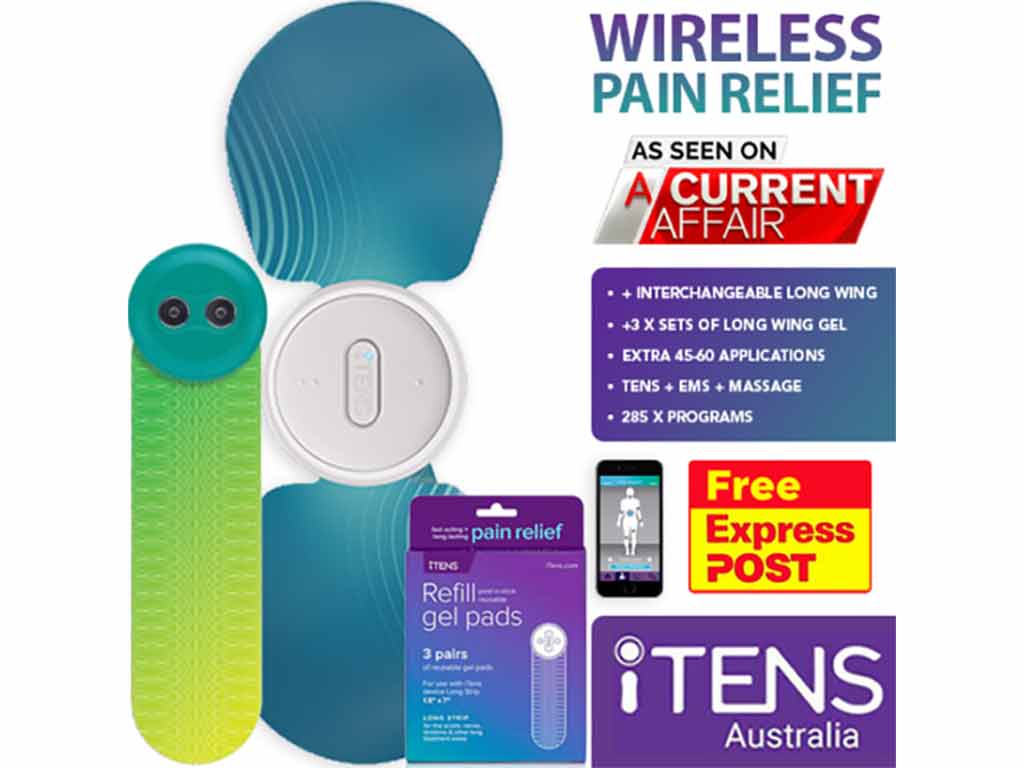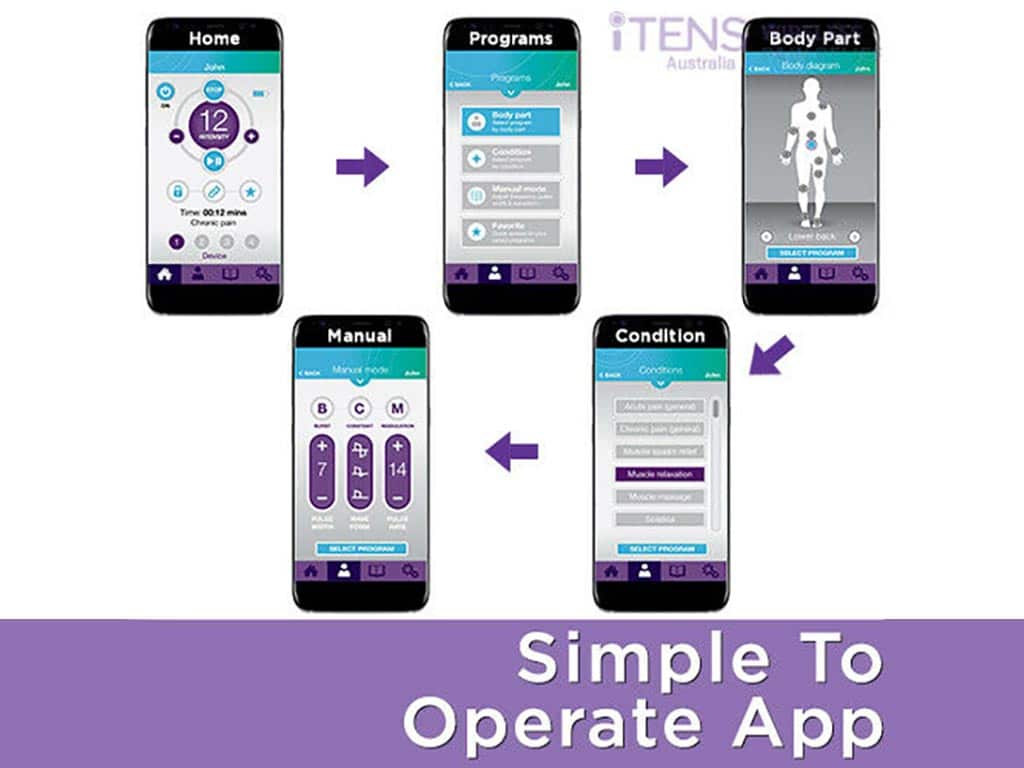
Transcutaneous Electrical Nerve stimulation (TENS) is a form of low-voltage electrotherapy. Its purpose is to provide pain relief in many chronic and acute conditions. It uses high and low frequencies to address different kinds of pain. The feeling of electrical stimulation is often described as a mild tingling sensation. Moreover, high-frequency stimulation causes TENS unit muscle contractions. Although it may cause discomfort, it is not a cause for concern unless the twitching is excessive.
Unlike Electrical Muscle Stimulation (EMS), TENS does not improve muscle strength and tone without physical exercise. However, it does have the effect of relaxing muscles and increasing blood circulation to the area. This reduces inflammation and allows for a wider range of movement to perform activities like exercise. This article will give an overview of TENS, how it works, and proper pad placement for this device.
TENS Unit Muscle Contraction: What is TENS
A TENS machine is a device that alleviates pain through low-voltage electrotherapy. They can be wired or wireless devices. With handheld units, a controller is linked to the pads with lead cables. Meanwhile, wireless units use Bluetooth technology to control the electrodes. These deliver electrical stimulation to the skin, producing a mild tingling sensation. TENS unit muscle contraction may occur with high frequencies, but it is usually temporary and harmless.
Unlike EMS, TENS is mainly used for pain relief. Most TENS units have a frequency range of 1-150 Hz with an intensity range of 0-80 mAmp. Using different settings and proper pad placement, TENS can alleviate pain from many conditions. Higher frequencies (50-120 Hz) are more suited for acute pain. These trigger the spinal nerve cells to block pain signals from reaching the brain. Additionally, it causes muscle relaxation and increased blood flow to the area.
On the other hand, low frequencies trigger the production of endorphins. These painkilling hormones build up and reduce the pain sensations. This is a longer process that can take up to 40 minutes. However, its effects are felt hours after the session.
Benefits of Using TENS
Patients can gain many potential benefits from TENS therapy. These are some of them:
- provides targeted pain relief for different areas of the body to address acute and chronic pain
- reduces or replaces intake of oral pain medication that can cause allergic reactions and adverse side effects such as headaches, stomach bleeding, heartburn, and fatigue
- complementary to different treatments and pain management methods due to its non-invasive nature
- convenient and easy to use to use at home or in other settings without medical supervision
- some devices are available for purchase online or in pharmacies without prescriptions.

TENS Unit Muscle Contraction: How to Use
TENS units are often used in hospitals and rehabilitation centres. Some healthcare professionals oversee the therapy. However, the devices are also safe to use at home without medical supervision. They are designed to be easy to use with various settings to control the frequencies and intensities of the session. Sometimes, TENS unit muscle contraction occur in specific muscle groups. It may cause discomfort. However, it is not a cause for concern unless the twitching becomes excessive.
Before using TENS, clean the skin with soap and water. Dry it before applying the adhesive pad. Then, switch on the machine in its lowest setting to avoid sudden shock or discomfort. Next, gradually increase the frequency or intensity or select a pre-set mode.
A TENS therapy session should last at a maximum of 60 minutes. However, it may vary depending on the settings used. Higher settings should be used for shorter periods to avoid overstimulation. Turn off the machine after the prescribed time has elapsed. Lastly, remove the electrodes and clean them for future use.
Who Cannot Use The Device
Electrotherapy is safe for most people. However, consulting a medical professional before use is the best method of ensuring that TENS is safe for the individual. Some conditions may negatively react with electric stimulation. Firstly, pregnant women should avoid electrotherapy before labour because it may cause uterine contractions.
Secondly, those with metal and electrical implants should abstain from using TENS. This includes those with pacemakers, as electrical stimulations may cause these devices to malfunction. Thirdly, people with a history of cancer, epilepsy, and arrhythmia should avoid TENS. Lastly, those with deep vein thrombosis should avoid using TENS because increased circulation may dislodge a blood clot.

TENS Unit Muscle Contraction: Proper Pad Placement
Proper pad placement is vital for providing targeted pain relief. Ideally, the individual should focus on one area to maximise the results. They can use up to four electrodes to deliver more power. However, these pads should be placed at least one inch apart to avoid interference. Moreover, it is best to place them on muscly areas near or on the pain area. This is to prevent TENS unit muscle contractions from causing adverse effects.
Ideally, a medical professional can inform the user where to place the pads, including other advice. The person using TENS can also refer to the safety guidelines included with their machine to check which areas are safe to place electrodes on.
It is vital to avoid sensitive areas like the throat, mouth, eyes, bones, joints, and top of the head. Additionally, avoid placing electrodes on damaged, irritated, or infected skin. Lastly, individuals must regularly clean the adhesives after use and store them to prolong their usage.
Risks of Overuse
When using TENS therapy, the individual should avoid exceeding the prescribed duration of their session. This is because doing so may cause adverse effects. The most common issue is skin irritation and mild rashes caused by long-term skin contact with electrodes. This can be avoided by taking breaks in between sessions.
Moreover, overuse of high-frequency stimulation can cause overstimulation. This can result in muscle fatigue, increased pain, and headaches. In some cases, it may even cause muscle or nerve damage. If the person feels numbness or burning sensations while using TENS, they should stop and seek medical help.
Conclusion
TENS Unit Muscle Contraction can be achieved through the use of high-frequencies. However, it is not recommended to exceed 30 minutes using this setting. This is because exceeding the prescribed duration can cause overstimulation. Additionally, it lessens the effectiveness of future sessions. Consulting a medical professional regarding the length of time and settings is the best way to ensure safety while using TENS therapy.
It is essential to be aware of the differences among electrotherapy devices. This will allow the person to make an informed decision before purchasing. Those seeking muscle contractions to aid with exercise may benefit more from using EMS. Meanwhile, people looking for alternative pain management methods may use TENS. There are many options for these devices in the market. The iTENS from iTENS Australia is a wireless TENS device with innovative wing-shaped electrode pads for convenient pain alleviation.







